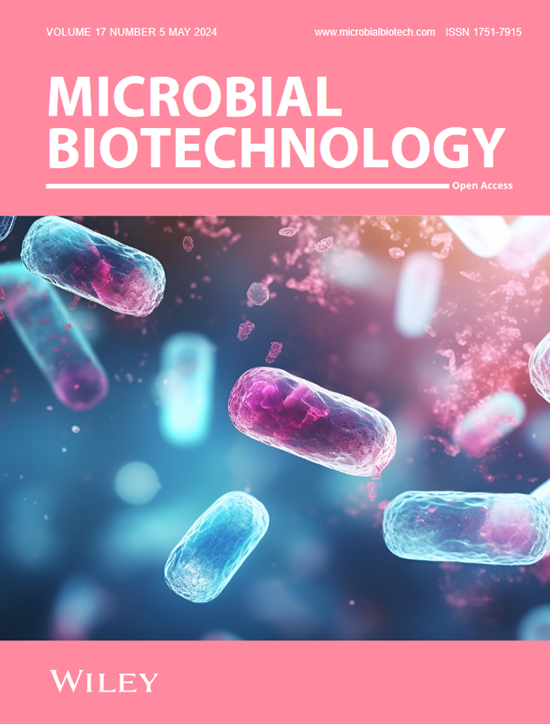单细胞的秘密生活
IF 5.2
2区 生物学
Q1 BIOTECHNOLOGY & APPLIED MICROBIOLOGY
引用次数: 4
摘要
回顾微生物生物技术的前15年,一种趋势正在出现,即生物技术的研究正从关注全细胞群体(即使在强劲生长期间也存在异质性)转向强调单细胞的研究。这让人们乐观地认为,人们将对群落中细菌生长的无数方面有所了解。本文章由计算机程序翻译,如有差异,请以英文原文为准。
The secret lives of single cells
Looking back fondly on the first 15 years of Microbial Biotechnology, a trend is emerging that biotechnology is moving from studies that focus on whole-cell populations, where heterogeneity exists even during robust growth, to those with an emphasis on single cells. This instils optimism that insights will be made into myriad aspects of bacterial growth in communities.
求助全文
通过发布文献求助,成功后即可免费获取论文全文。
去求助
来源期刊

Microbial Biotechnology
BIOTECHNOLOGY & APPLIED MICROBIOLOGY-MICROBIOLOGY
CiteScore
9.80
自引率
3.50%
发文量
162
审稿时长
6-12 weeks
期刊介绍:
Microbial Biotechnology publishes papers of original research reporting significant advances in any aspect of microbial applications, including, but not limited to biotechnologies related to: Green chemistry; Primary metabolites; Food, beverages and supplements; Secondary metabolites and natural products; Pharmaceuticals; Diagnostics; Agriculture; Bioenergy; Biomining, including oil recovery and processing; Bioremediation; Biopolymers, biomaterials; Bionanotechnology; Biosurfactants and bioemulsifiers; Compatible solutes and bioprotectants; Biosensors, monitoring systems, quantitative microbial risk assessment; Technology development; Protein engineering; Functional genomics; Metabolic engineering; Metabolic design; Systems analysis, modelling; Process engineering; Biologically-based analytical methods; Microbially-based strategies in public health; Microbially-based strategies to influence global processes
 求助内容:
求助内容: 应助结果提醒方式:
应助结果提醒方式:


